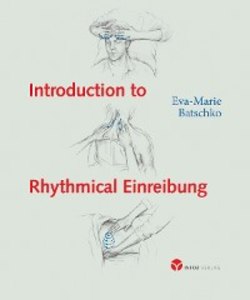Читать книгу Introduction to Rhythmical Einreibung - Eva-Marie Batschko - Страница 7
ОглавлениеExercises for training observation ‘Finger exercises’ as preparation
The water exercise
A basin filled with water is put on the table. Standing at one end of the basin, I touch the water surface with my hands held in parallel.
First I can feel the temperature of the water, then its surface tension. Slowly I submerge my hands deeper and deeper into the water and can perceive that this is possible only by exerting pressure.
If I release the tension from my hands under water, the water carries them back to the surface. The water has tangible buoyancy.
When I lift my hands from the surface, the water is sucked upwards slightly before contact is completely broken.
In a next exercise, I slowly let my hands glide in a straight line over the surface of the water.
Here I can observe the flow and the formation of the vortex within the water. A more subtle feeling for this process of immersion is developed through regular practice.
The warmth exercise
I lift a hand to shoulder height, the palm of the hand facing forwards. I bend my fingers towards the heel of the hand without completely closing them in a fist.
I gradually perceive the warmth developing in the palm of my hand. It forms with ever greater clarity into a 'ball of warmth' with a 'boundary'. Now I open my hand again and slightly spread my fingers; as a result the ‘ball of warmth’ can expand and be ‘held’.
This exercise supports the warming of the hands before the Einreibung. Slightly spreading the fingers during treatment can preserve the warmth developed in this way. (If, on the other hand, the fingers were spread completely apart, the warmth would dissipate and coolness would surround my palm!)
The group warmth exercise (circle)
The participants stand in a circle and hold their left hand in the supination position (the ulna and the radius are in parallel), the right hand is in the pronation position.
Then they move their hands towards one another so that the circle is closed. The participants do not touch their neighbours’ hands directly but instead perceive only the warmth that arises between their hands.
This exercise requires attentiveness to the quality of the warmth: do the left and right hands show any differences in generating warmth?
What is the quality of the warmth arising in the space between the hands (e.g. radiating, rapidly developing or slowly building up)?
This exercise trains a sense of the warmth envelope created during the treatment.
The follow-up exercise
All the participants are moving about at the same time; therefore a lot of space must be available (possibly outdoors). The participants separate into pairs.
One participant in each pair goes ahead, thereby revealing their ’movement melody’. The other participant follows, trying to immerse themselves in the bearing of the leading participant’s movement (posture, movement approach, step length, etc.) and imitate it. As soon as the leading participant perceives that the following participant’s movements correspond to their own, they give the signal to change. Then the follower becomes the leader – and the exercise is repeated.
Subsequently, still in pairs, they discuss the types of movement of the leading participant (e.g., purposeful, soothing, tiring, refreshing, invigorating, energetic, powerful, etc.).
In the plenum, this is then put in the context of the three-fold human constitution and the question is considered as to whether the gait was respectively dominated by the head, metabolic and limb or rhythmical system; ’head-types’ are dominated by the nervous and sensory system and thus their gait reveals excessive control by the head; the movement flow is halting. If the metabolic and limb system dominates, the movement brimming with life starts in the hip area, sending impulses to the limbs – and sometimes the head also begins to ’dance’. When the movements are in harmony with the rhythmical system, a harmonious, light and graceful gait comes about, the source of which is initiated between the shoulder blades. This exercise trains the perception of the threefold nature of the human organism revealed in walking.
Independently of such exercises, we can also in our day-to-day lives try to sense the manifestation of the four constitutional elements of the human being in their handshake as we greet another person:
Physical body:
Findings – Form or deformation of the hand (large – small – narrow – wide – long – short, etc.)
Etheric body:
State – Condition of the hand (moist and warm – moist and cold – dry and hot – dry and cold –sticky with sweat – drops of sweat, etc.)
Astral body:
Mood – Psychological state revealed through the handshake (shy – cordial – limp – squeezing – powerful – gripping – listening – shaking – calm – assertive, etc.)
The I:
Presence – Revelation of the spirit through the handshake (presence of the distinctive personality – spiritual presence – authenticity – interest, etc.) Here eye contact is important as well!
